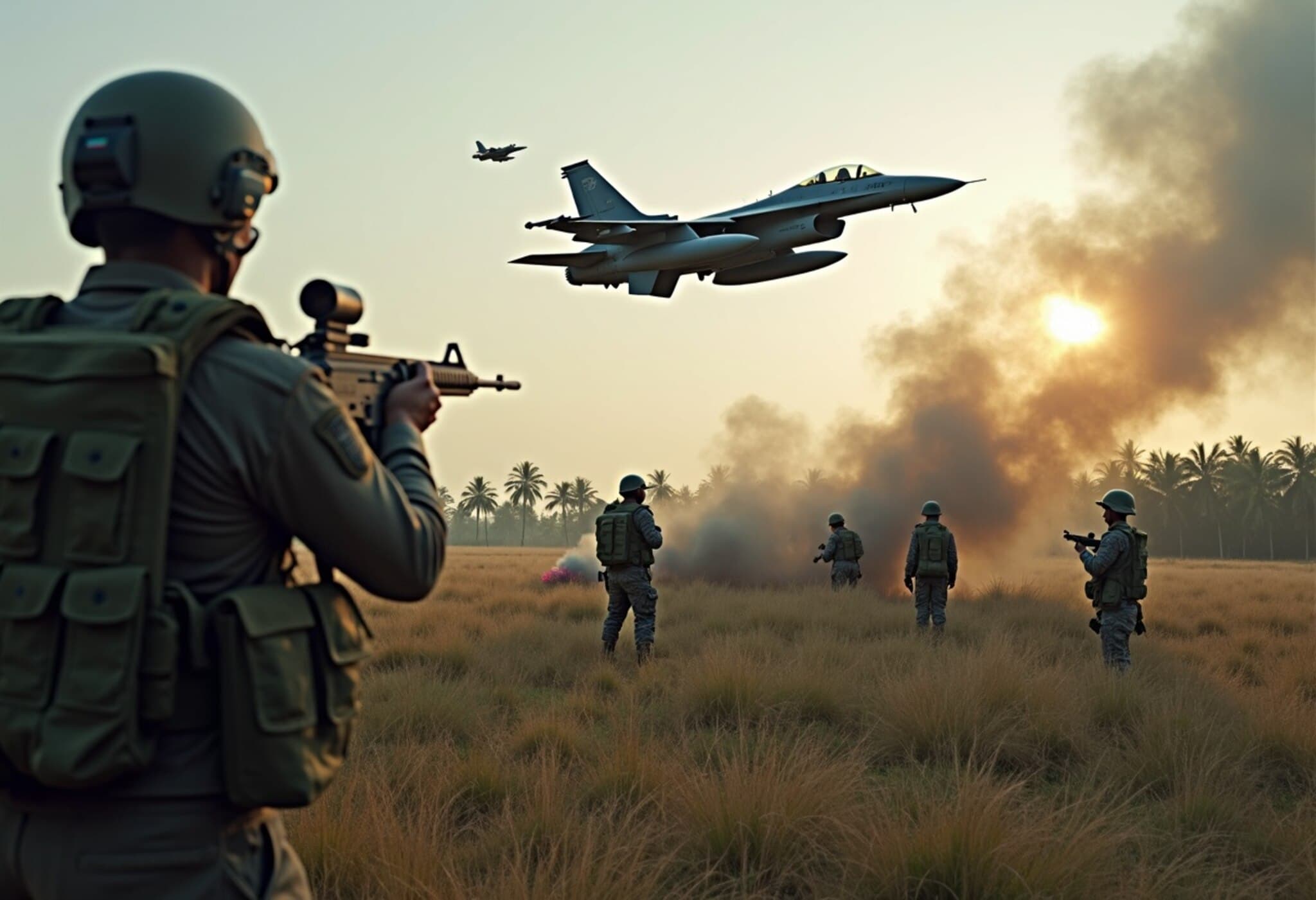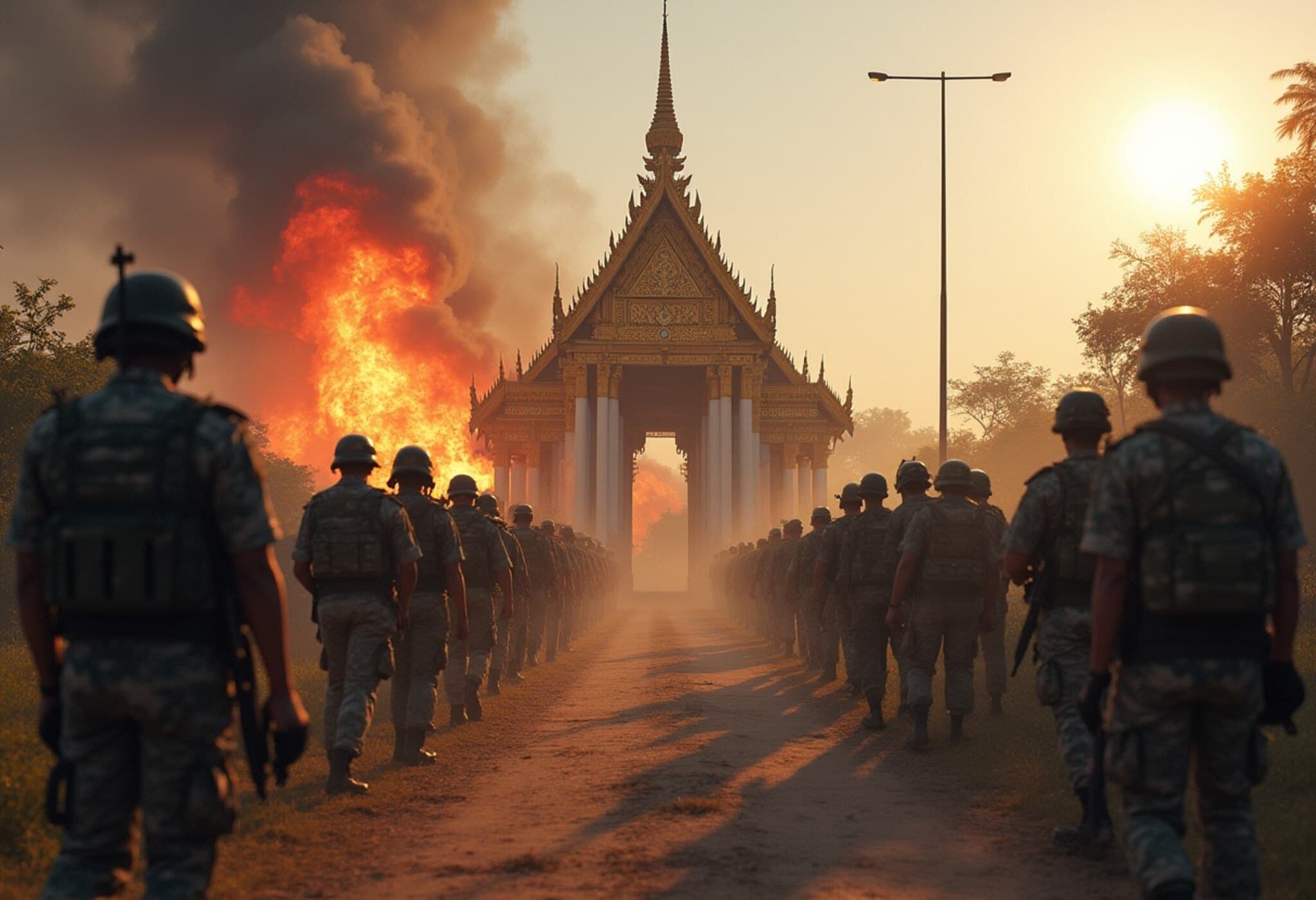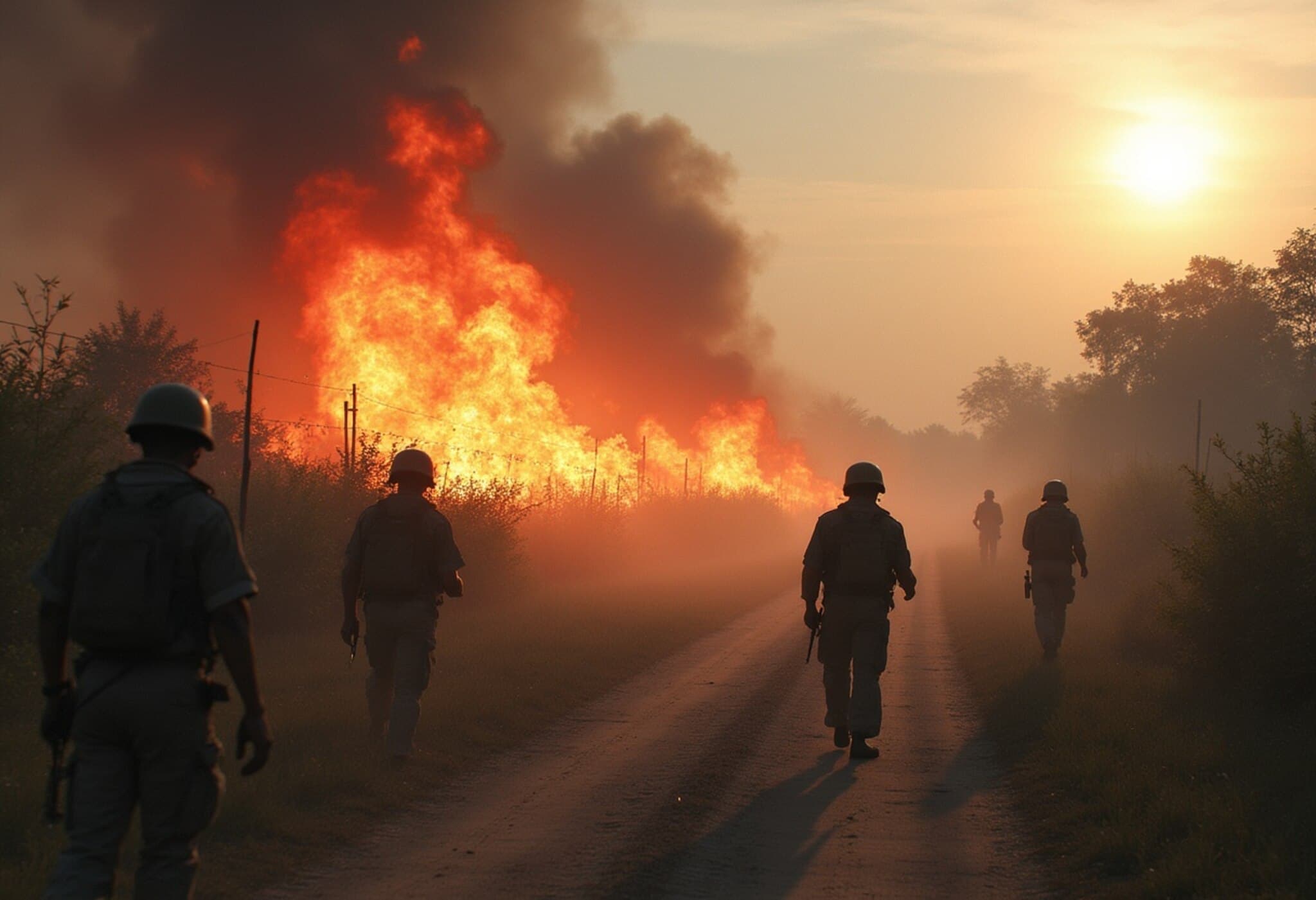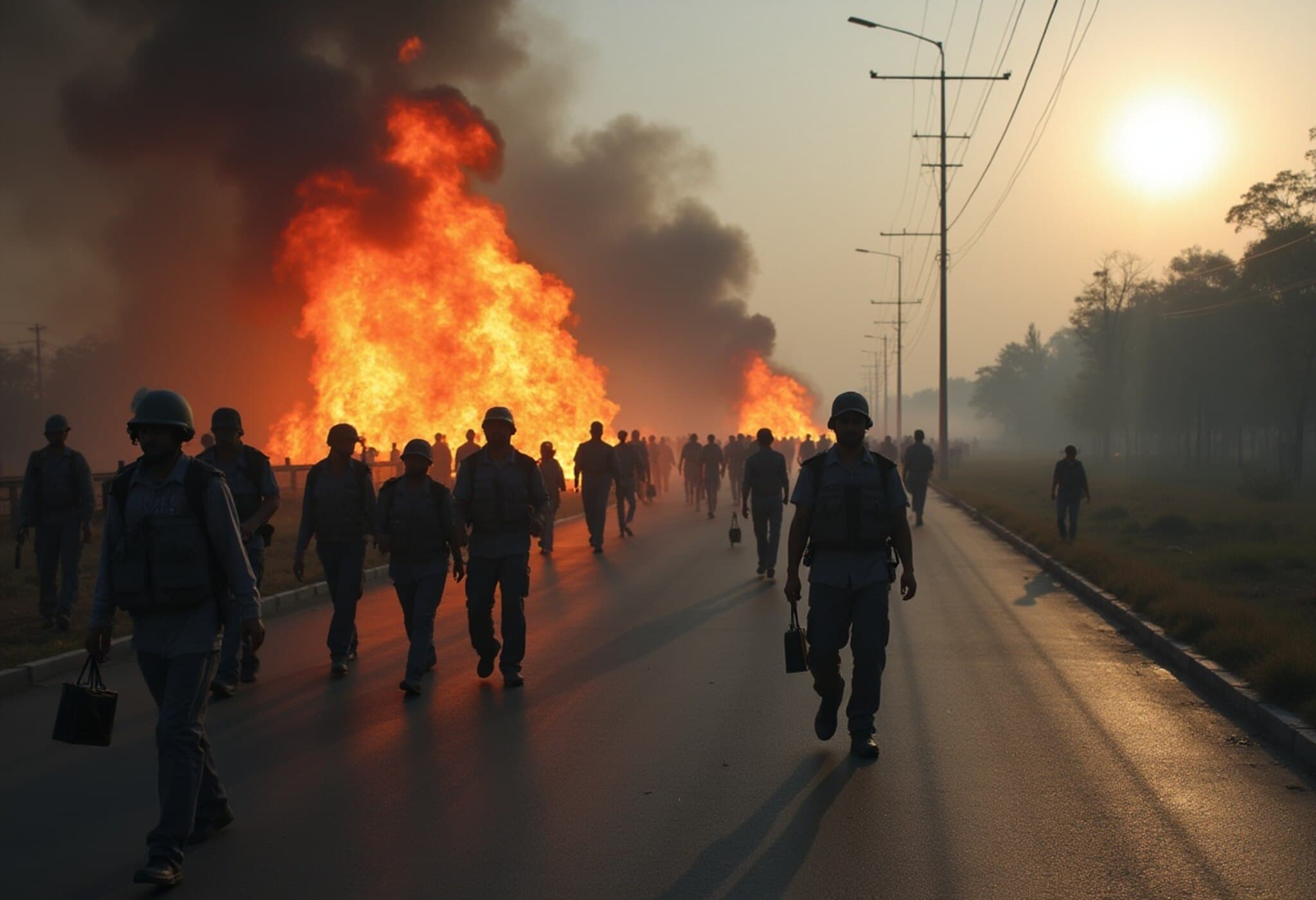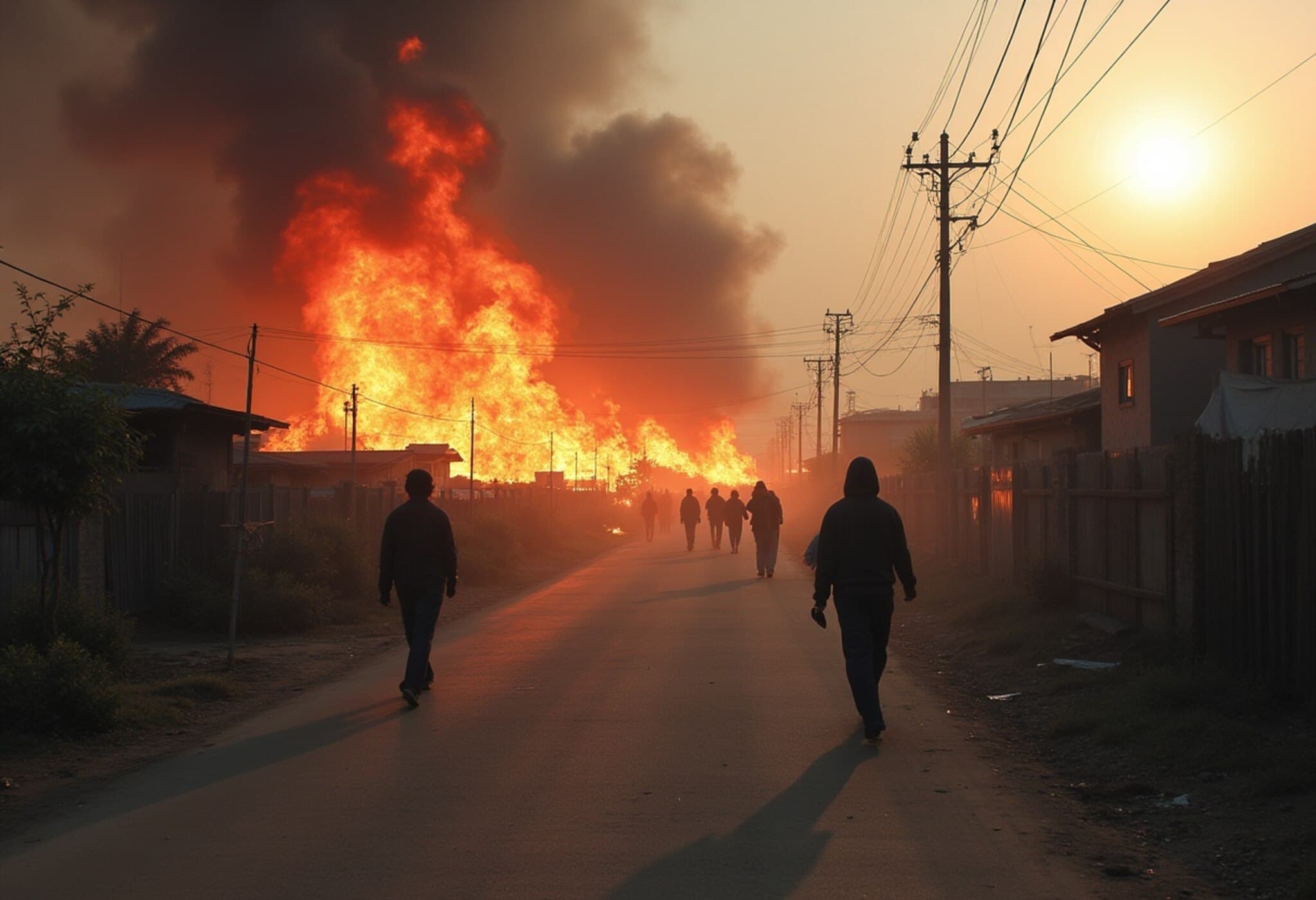Thailand Escalates Border Dispute by Deploying F-16 Fighter Jets Against Cambodia
In a dramatic escalation of longstanding tensions, Thailand deployed F-16 fighter jets to bomb military targets inside Cambodia on Thursday, marking a significant intensification of the border conflict that has already claimed civilian lives.
A Decades-Old Dispute Ignites Once More
The disputed territory along the 817-kilometer border between Thailand and Cambodia has been a contentious flashpoint for over a century. While sporadic skirmishes have erupted repeatedly, the recent bursting into cross-border air strikes signals a dangerous new chapter in this already fragile relationship.
According to the Thai army, one of six stationed F-16s struck a military target inside Cambodia, igniting sharp accusations from both sides about who initiated the violence. Thai army deputy spokesperson Richa Suksuwanon stated: "We have used air power against military targets as planned." Following the air strike, Thailand closed its border with Cambodia, citing security concerns.
Conflicting Narratives and Rising Casualties
Cambodia’s defense ministry condemned the attack, labeling it "reckless and brutal military aggression" against the sovereignty and territorial integrity of Cambodia. The bombing reportedly included two bombs dropped on a road near the contested border region. Meanwhile, each nation blames the other for sparking the conflict early Thursday morning.
On the ground, violence has taken a heavy toll. At least two civilians have been killed amid the shelling and gunfire. Tens of thousands of Thai residents in the Surin province—many living just a stone’s throw from the frontier—have fled their homes, seeking refuge in hastily assembled bunkers fortified with sandbags and car tires. One local resident, speaking to Thai Public Broadcasting Service, described the continuous barrage: "How many rounds have been fired? It's countless."
The Landmine Controversy: A Backdrop of Historical Danger
Complicating the situation is the issue of landmines, a lethal legacy of past conflicts in this region. Thailand recently accused Cambodia of planting new landmines in the disputed zone, which allegedly caused injuries to several Thai soldiers. Cambodia rejected these accusations, asserting that the injured troops had strayed off agreed routes and triggered unexploded mines from previous wars.
This claim is underscored by the grim reality that Cambodia is one of the most heavily landmined countries worldwide, with millions of active mines scattered across former conflict zones, posing fears not only for soldiers but also for civilians trying to live normal lives near the border.
The Diplomatic Fallout and Regional Implications
Recent clashes have severely strained diplomatic relations. Thailand recalled its ambassador to Cambodia and announced the expulsion of the Cambodian envoy in Bangkok. Earlier attempts to ease tensions, including a now-controversial phone call between Thai Premier Paetongtarn Shinawatra and Cambodia’s former Prime Minister Hun Sen, only fueled political turmoil, leading to Shinawatra’s suspension by a Thai court.
Acting Thai Prime Minister Phumtham Wechayachai urged caution, stating, "We have to be careful. We will follow international law." This statement highlights the fragility of the situation and the risk that localized violence could spiral into a broader regional conflict if left unchecked.
Expert Perspectives: What Does This Mean for ASEAN Stability?
Regional experts warn that the renewed violence between Thailand and Cambodia challenges the stability and unity of Southeast Asia, particularly within the Association of Southeast Asian Nations (ASEAN). The border dispute, if unresolved, risks undermining cooperative efforts on economic development and security in the region.
American policy analysts also note that such military escalations near critical maritime and land trade routes could indirectly affect global commerce. Moreover, in terms of U.S. foreign policy, growing instability in Southeast Asia might prompt renewed engagement to support peaceful conflict resolution and regional partnerships.
Looking Ahead: Underreported Questions and Paths Forward
- How robust are existing border demarcation frameworks? Despite longstanding efforts, the boundary remains vaguely defined in critical areas — a root cause of recurring clashes demanding urgent diplomatic redress.
- What role can ASEAN and international mediators play? There is growing international interest in brokering peace, but the complexities of national pride, historical grievances, and territorial sovereignty complicate neutral intervention.
- What about civilian safety in conflict zones? Beyond military losses, the impact on thousands of displaced civilians—a major humanitarian concern—needs more comprehensive attention and relief coordination.
Editor’s Note
This latest flare-up between Thailand and Cambodia underscores how unresolved historical disputes continue to reverberate with deadly consequences, disrupting lives and regional stability. As diplomatic channels falter and military responses intensify, the international community must weigh the stakes of prolonged conflict—ranging from human suffering to regional security risks. Observers should watch closely for efforts toward substantive dialogue and demilitarization, lest this border dispute deepen into a protracted crisis impacting ASEAN cooperation and global geopolitical interests.

